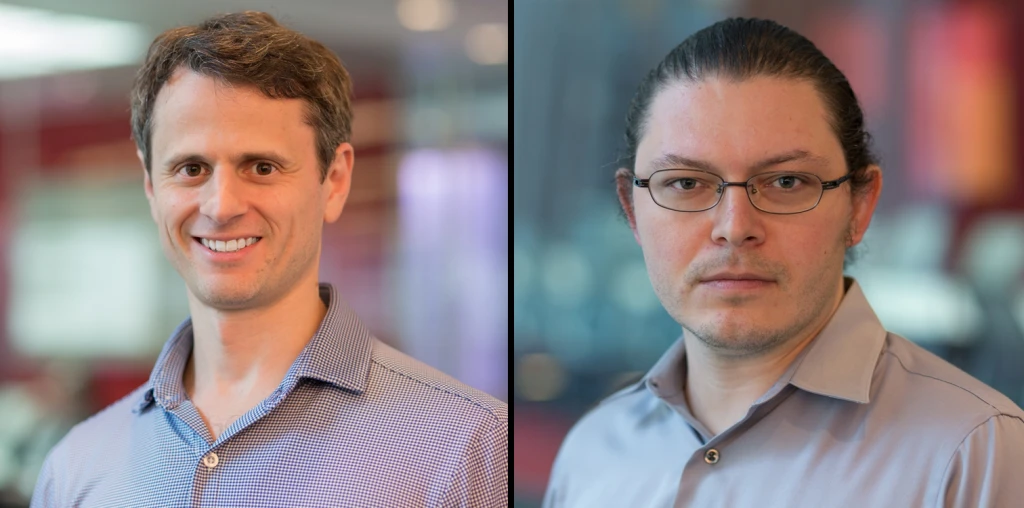Bloomberg data scientists bring real-world experience to New York City universities
May 11, 2017
Institutions of higher learning often tap experts with real-world experience for part-time teaching positions. This spring, two Bloomberg data scientists in New York City are serving as professors, leading-graduate level courses in machine learning and data science. From the Office of the CTO, David Rosenberg is teaching “Machine Learning & Computational Statistics” at New York University’s Center for Data Science (CDS), while Gary Kazantsev, head of the Machine Learning Group in Bloomberg’s Engineering organization, is co-teaching a class at Cornell Tech titled “Data Science in the Wild.”

Now in his third year offering a course at NYU, Rosenberg began teaching shortly before joining Bloomberg, and continues to do so thanks to strong encouragement from the company. He is among the university’s most popular professors, with his class size more than doubling from 60 students his first year to 125 this semester, and his students have twice voted him ‘CDS Professor of the Year.’ “I’ve always enjoyed explaining ideas,” he proclaims. “To explain ideas, I must understand them well myself. I enjoy that process of presenting and sharing that understanding.”
David says that in addition to his regular duties at Bloomberg, where he sets the technical direction for machine learning projects throughout the Engineering and Global Data departments, he enjoys dipping into academic life. Plus, having access to professors and researchers at NYU helps him keep up with rapidly changing developments in the worlds of machine learning and natural language processing (NLP). “One can get a little inward-looking when tackling specific problems,” he acknowledges. “Teaching helps you keep an eye on the broader industry landscape and trends, and constantly leads you to re-evaluate topics.”
Kazantsev, whose day job at Bloomberg involves managing projects at the intersection of computational linguistics, machine learning, and finance, wrote the graduate-level curriculum for “Data Science in the Wild” with his Cornell Tech co-instructor Stephen Purpura, continuing the theme from a class the school had offered before. From Gary’s perspective, “in the wild” means creating a bridge between machine learning theory, mathematical intuition, and good engineering practices, while building actual products. By the end of the semester, he hopes students “will have learned enough to take something from an idea to a prototype using machine learning and a scientific approach to data.”
Rosenberg designed his curriculum around similar goals. Students in his class – which is required for a Master of Science degree in Data Science – learn how to convert a vague or poorly structured business problem into one that can be solved using appropriate research strategies, sources and available software libraries. “Once you know your way around the basics, you can pursue a deeper level of understanding into specific methods – and you know what might work well or not, on a mathematical level,” he reveals.
The valuable insights these data scientists gain from teaching also enhance their work at Bloomberg. “There is a saying that you don’t understand something fully until you have to teach it,” Kazantsev notes. His experience teaching at Cornell Tech helps reshape his thinking and create content that proves particularly useful when, for example, he’s training new hires at the company.
Asked about his Best Professor awards, Rosenberg denies having a secret formula or teaching method. “My goal is to try and design the best class possible. This class is really about the core machine learning stuff I do every day at my job. Hopefully, this makes me more convincing to the students because I am speaking from experience.”